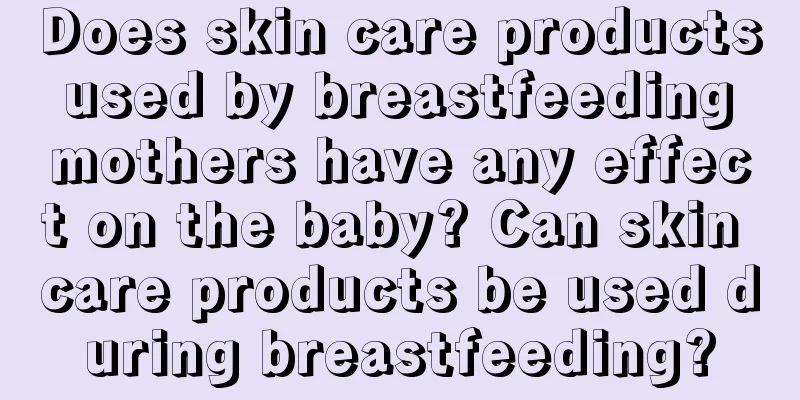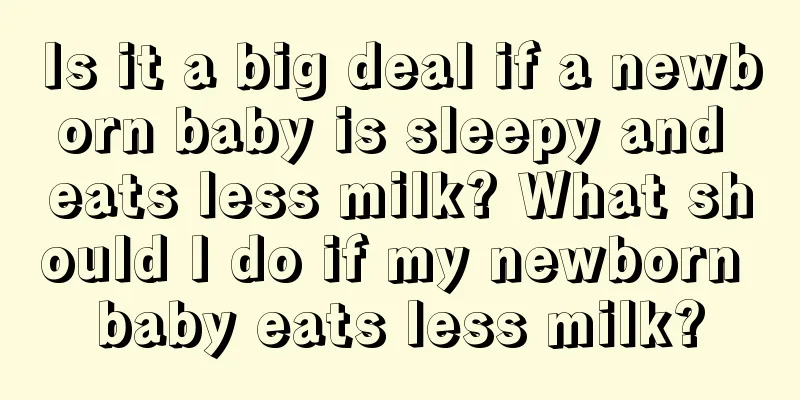What material is the best for baby bottles?

|
Parents usually worry about their baby's healthy growth before the baby is born. Bottles are a must for babies, so a good bottle will affect the baby's health. Today, let's analyze which common bottles are better. The difference between five kinds of baby bottles1. Generally speaking, glass bottles are more suitable for newborns. They are safer and heat-resistant, have no odor, have good heat preservation effects, and are easy to clean. However, glass bottles are easy to break and are not suitable for babies to hold, so they are suitable for newborn babies. 2. Plastic bottles are more suitable for older babies. This type of bottle is lighter, so babies can hold it and drink by themselves, and it can also exercise their grasping ability. However, compared with glass, this type of bottle is more likely to leave milk stains and is inconvenient to clean. 3. Silicone rubber baby bottles are safe and non-toxic. Even if the silicone is kept at room temperature, breast milk is not easy to deteriorate. If it is refrigerated or frozen, it can better maintain the freshness of breast milk. Silicone baby bottles do not contain harmful environmental hormones and are non-toxic. You do not need to change the baby bottle, you only need to change the nipple and it can be used for a long time. 4. Among the many materials for baby bottles, ceramic baby bottles are the healthiest tableware material. Except for poor light transmittance and easy breakage, other qualities of ceramic baby bottles are superior to other baby bottle materials. 5. Stainless steel baby bottles are durable, safe, environmentally friendly, hygienic and antibacterial, easy to control temperature, lightweight and portable, not easy to break, and do not contain harmful ingredients such as BPA. They are not only suitable for small babies, but also can be used by themselves when babies grow up. They can also replace water cups and are very practical. The difference between commonly used baby bottles on the market1. PC baby bottle (obsolete) Although PC baby bottles have been eliminated, we still need to learn about them, which will help us understand and distinguish baby bottles made of other materials. PC stands for polycarbonate, commonly known as space glass. PC baby bottles are lightweight, unbreakable, and highly transparent, making them suitable for use outside and for older babies to use by themselves. However, PC baby bottles will release bisphenol A (BPA) when sterilized at a temperature of over 100 degrees, and the longer they are used, the more BPA will be released. Bisphenol A baby bottles can induce precocious puberty, disrupt the body's metabolic process, affect infant development and immunity, and even cause cancer. Therefore, my country banned the production of PC baby bottles and other infant food containers containing bisphenol A from June 1, 2011, and banned the sale of baby bottles containing bisphenol A from September 1, 2011. 2. PP baby bottles PP baby bottles are made of PP (polypropylene) material, which is recognized as a safe material for making food containers in the world and does not contain the carcinogen bisphenol A. Therefore, the plastic baby bottles on the market now use PP instead of PC. Features: PP baby bottles have high chemical stability, good hygienic properties, high heat resistance, and microwave tableware is generally made of PP plastic, which is non-toxic, harmless to the human body, and cheap. It is basically safe below 130°C; however, PP baby bottles have a short lifespan, a short long-term high temperature resistance time, and are not as transparent and beautiful as PC baby bottles. Transparency: High-quality PP baby bottles are not very transparent, and have a slightly whitish feel. This is determined by the nature of the PP material. There are no impurities, obvious mold patterns, or flashing on the bottle. The scale on the bottle is also very clear and standard, and the color is relatively uniform. "PP" baby bottles with high transparency may have a transparent enhancer added, or they may be made of PC material. Smell: The propylene molecules in PP plastic have a certain smell. The smell in a newly purchased PP baby bottle is the smell of the PP material itself. It has no side effects on the human body and will not cause harm to the human body. The odor of PP bottles will generally decrease after 15 days under ventilation. When using a PP bottle for the first time, boil it in water for a long time to remove the non-volatile additives. (Boil for 15-20 minutes each time, remove and air dry after boiling, repeat 3-4 times to remove the odor.) Or put bamboo or carbon deodorizer in the bottle to reduce the odor. 3. PES baby bottles PES, also known as polyethersulfone, is a transparent amber amorphous resin with excellent heat resistance, excellent dimensional stability, and good chemical resistance. PES has excellent reliability against rapid temperature changes and excellent processing and molding properties, which makes PES widely used. PES baby bottles are a type of plastic baby bottles and are currently one of the more popular baby bottle materials. Advantages of PES baby bottles: lightweight, drop-resistant, easy to clean, safe and bisphenol A-free; high heat resistance, heat-resistant up to 180°C Disadvantages of PES baby bottles: Residual milk stains are not easy to clean When purchasing baby bottles, paying attention to the labels on the bottles and packaging, and choosing regular shopping channels are the best ways to ensure that you purchase genuine PES baby bottles. 4. PPSU baby bottles PPSU baby bottles are made of the safest new material PPSU (polyphenylsulfone) and do not contain bisphenol A. Features: PPSU is a material with excellent heat resistance and is widely used in medical equipment. The heat resistance temperature is up to 207 degrees, and it can be repeatedly boiled at high temperature, steam sterilized, vacuum sterilized in hospitals, microwave sterilized, and sterilized with liquid medicine. PPSU is a high-end material for baby bottles. Some PPSU baby bottles are brown in color and slightly soft in texture. PPSU material has excellent drug resistance and acid and alkali resistance, and can withstand general cleaning with chemicals and detergents without chemical changes. PPSU baby bottles have the three advantages of being non-toxic like glass baby bottles and being light and unbreakable like plastic baby bottles. PPSU is the most ideal and safest material for baby bottles. PPSU baby bottles are mostly used by children in Japan, Europe and the United States. The baby bottles are light and resistant to falling. They are the best in terms of safety, temperature resistance, hydrolysis resistance and impact resistance. However, they are expensive, and there are few varieties, making them difficult to buy. PPSU milk bottles are divided into ordinary PPSU milk bottles and PPSU anti-spitting milk bottles according to their functions. PPSU anti-spitting milk bottles can reduce the air inhaled by babies when drinking milk, thus effectively reducing the phenomenon of flatulence, burping and spitting up of milk after drinking milk. Mothers can choose for their babies according to their needs. TIPS: A comparison of four types of plastic milk bottles The plastic milk bottles we often talk about include the PC milk bottles, PP milk bottles, PES milk bottles, and PPSU milk bottles that have been introduced above. Now, let's make a comparison in terms of heat resistance, corrosion resistance, transparency, and cleanliness. Heat resistance: PPSU>PES= PC> PP Corrosion resistance: PPSU>PES>PC>PP Transparency: PC>PES>PPSU>PP Cleanliness: PPSU=PES>PC>PP Next, we will continue to introduce silicone baby bottles, glass baby bottles and stainless steel baby bottles. 5. Silicone baby bottle Silicone baby bottles are made of colorless, odorless, non-toxic liquid silicone (LSR). They do not contain bisphenol A and will not break. The silicone baby bottle is soft, lightweight and durable, easy to suck, not easy to age, heat-resistant, resistant to chemical corrosion, and not easy to break. At the same time, it has moderate viscosity and is easy to operate. The product is highly transparent, made of safe materials, and easy to carry, but the price is relatively high. The material of silicone feels like human skin. Feel: A good silicone bottle should have a good feel. When feeding the baby, the baby often holds the bottle and milk in his hands; a good touch is conducive to the baby's emotional stability and the development of the baby's emotional intelligence, which is incomparable to other materials. Elasticity: A good silicone baby bottle should have good elasticity. The elasticity of silicone is different from that of rubber: it is not hard elasticity, but soft and delicate. At the same time, you can try to fill the bottle with hot water. After filling with water, it will feel more like human skin. Silicone baby bottles are more heat-resistant than ordinary plastic bottles, and there will be no problem with long-term sterilization. They will not deform even if sterilized in boiling water or in a microwave. Silicone baby bottles are economical and affordable. You don't need to change the bottle, you only need to change the nipple and it can be used forever. When the baby grows up, you can change the lid and use it as a water bottle, or leave it for the next generation. Silicone baby bottles do not contain environmental hormones that are harmful to babies and are not toxic. You don't need to change the bottle, you only need to change the nipple and it can be used forever. 6. Glass baby bottles Glass baby bottles are made of high-grade heat-resistant glass. The material is safe and does not contain the carcinogen bisphenol A. It has high transparency and will not release harmful substances when exposed to acidic or alkaline substances. Glass baby bottles are made of materials such as high borosilicate, soda-lime and potassium-lime glass (mainly used for food and medicine packaging containers). High borosilicate glass has high light transmittance, better physical properties and chemical stability, which are unmatched by soda-lime and potassium-lime glass. Advantages: good safety, high glass transparency, good heat resistance, not easy to scratch, not easy to hide dirt, easy to clean, multiple high-temperature disinfection without deterioration, suitable for newborns who need to feed multiple times. Disadvantages: Not strong enough and easy to break, so glass bottles are suitable for feeding newborn babies, and parents hold them for feeding. But after four months, babies start to be naughty, and considering safety, it is advisable to switch to plastic bottles. Generally, a good glass milk bottle has good transparency, so you can clearly see the capacity and status of the milk, which makes it convenient for mothers to clearly see the capacity when making milk powder. When buying milk bottles, mothers must pay attention to the fact that the bottle body should not have too many patterns and colors, because the brighter the color, the higher the heavy metal content. Mothers should not buy milk bottles that may cause potential harm to the baby just for the sake of a small bargain. Glass baby bottles are mainly divided into ordinary glass baby bottles and safety glass baby bottles according to their functions. Ordinary glass baby bottles are easy to hurt people when they are broken, while safety glass baby bottles are more impact-resistant than ordinary glass baby bottles because of their double-layer design, with the inner layer made of glass and the outer layer made of high-strength material. The most important thing is that even if they are broken, the glass fragments are wrapped in the outer protective layer to prevent damage from the fragments. 7. Stainless steel baby bottles Stainless steel baby bottles are baby bottles made of stainless steel. Advantages: durable, antibacterial and hygienic, easy to control temperature, easy to carry, not easy to break, safe and non-toxic, economical and environmentally friendly Disadvantages: 1. It is not transparent and difficult to quantify. Although the scale is clear, it is not convenient to observe the dissolution, which is a bit troublesome. 2. It is not light enough. The development of baby bottles has gradually changed from plastic to stainless steel. The chemical component "bisphenol A" contained in plastic bottles may cause cancer. In recent years, many parents have abandoned plastic bottles and switched to stainless steel bottles. Now the new consumption trend of baby bottles in the United States is to use stainless steel bottles. The latest issue of "American Baby" magazine analyzes the new trends of infant products in 2012 and points out that stainless steel baby bottles will become more and more popular in the new year. Harts, senior editor-in-chief of "American Baby", pointed out that glass baby bottles have the disadvantage of being easily broken or shattered, while stainless steel baby bottles do not have these problems. Not only are they lighter, but when the baby grows up, the nipple on the bottle can be replaced and turned into a children's water bottle for continued use, which is more in line with the concept of environmental protection. How to choose a baby bottleSo when choosing, pay attention to the following aspects: 1. Observe the transparency of the bottle. Whether it is a glass bottle or a plastic bottle, a high-quality bottle has good transparency, you can see the milk or water in the bottle clearly, and the scale on the bottle is very clear and standard. 2. Test the hardness of the bottle. High-quality bottles are hard and not easily deformed by hand. Bottles that are too soft will deform when sterilized at high temperatures or when boiling water is added, and toxic substances may leak out. 3. Smell the bottle. Poor quality bottles will smell strange after opening, while qualified high-quality bottles will not have any strange smell. |
<<: Which brand of milk bottle is good? Which brand of milk bottle is the best?
Recommend
What method can help babies defecate gently? Honey decoction treats baby constipation
Baby constipation is a headache. Unlike adults wh...
What are the white spots in the newborn's mouth?
Recently, some mothers reported that their babies...
What should you pay attention to when you are pregnant if you have allergies?
People with allergies must pay special attention ...
Can babies use electric blankets? Is it good for babies to use electric blankets?
The weather is getting colder, and many people ha...
What are the characteristics of Jierou paper towels? Why are Jierou paper towels so fragrant?
Although Jierou tissue is a little expensive, man...
Will it be difficult to regain body shape after a normal birth? Can eating fish relieve depression during pregnancy?
Many people are hesitating between natural childb...
What should I do if my baby's belly gets cold? What should I do if my baby has a severe nasal congestion at night?
The most important thing in daily care for babies...
How to choose baby shoes? The harm of children's shoes being too big
Many parents think that when children are in the ...
Is baby rice cereal cooked? How to store baby rice cereal?
New mothers lack the basic knowledge about rice c...
What is the reason for the baby to sweat after taking the antipyretic medicine? What should I do if the baby sweats after taking the antipyretic medicine?
The baby's fever is the most worrying and dis...
What should I do if my child is very clingy? What should I do if my child is very dependent?
Many children are raised by their mothers or gran...
Will a baby's constant crying affect his health? Will a baby's constant crying be harmful to his health?
Does a baby's constant crying affect his heal...
What causes low progesterone? How can pregnant women avoid low progesterone?
Low progesterone not only affects women's phy...
Will baby thrush heal on its own? Misconceptions about treating baby thrush
Thrush is a common oral fungus disease in infants...
The correct treatment of breast engorgement during weaning helps mothers quickly relieve the pain of breast engorgement
After weaning, not only will the baby be unable t...









